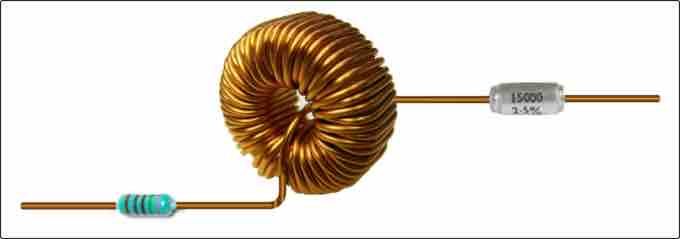In previous Atoms we learned how an RLC series circuit, as shown in , responds to an AC voltage source. By combining Ohm's law (Irms=Vrms/Z; Irms and Vrms are rms current and voltage) and the expression for impedance Z, from:

Series RLC Circuit
A series RLC circuit: a resistor, inductor and capacitor (from left).
we arrived at:
From the equation, we studied resonance conditions for the circuit. We also learned the phase relationships among the voltages across resistor, capacitor and inductor: when a sinusoidal voltage is applied, the current lags the voltage by a 90º phase in a circuit with an inductor, while the current leads the voltage by 90∘ in a circuit with a capacitor. Now, we will examine the system's response at limits of large and small frequencies.
At Large Frequencies
At large enough frequencies
At Small Frequencies
The impedance Z at small frequencies